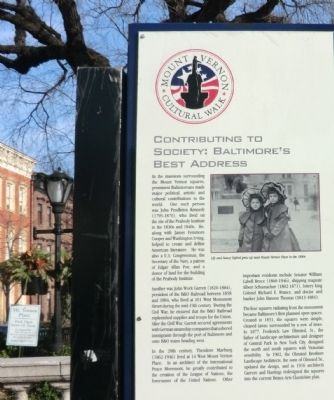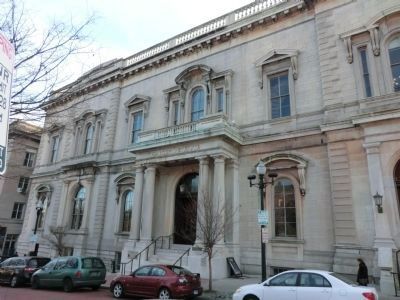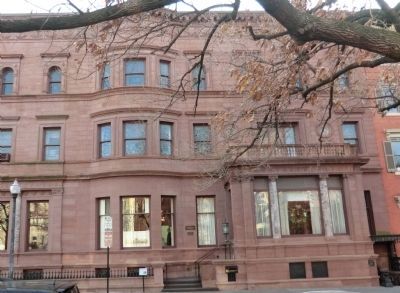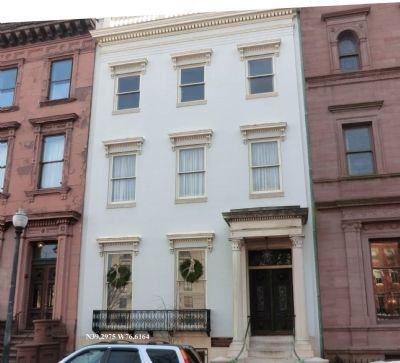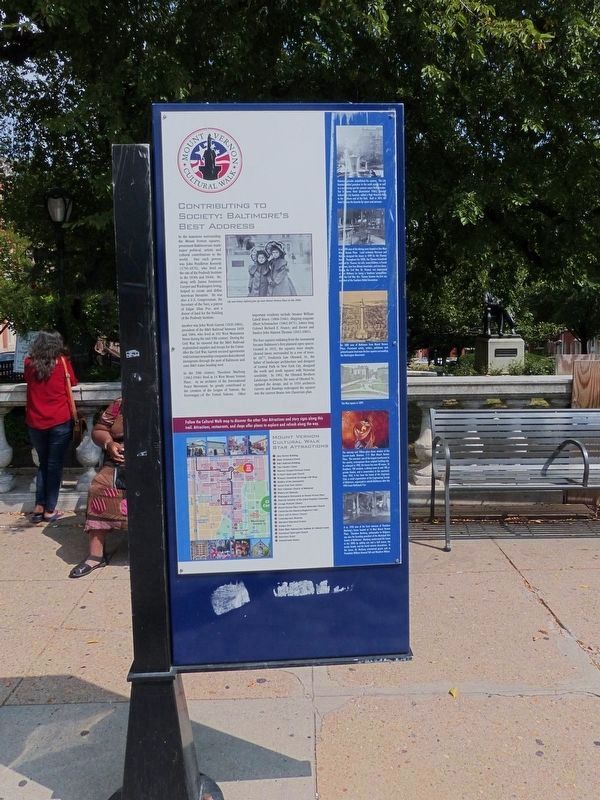Mount Vernon in Baltimore, Maryland — The American Northeast (Mid-Atlantic)
Contributing to Society: Baltimore's Best Address
Mount Vernon Cultural Walk
Inscription.
In the mansions surrounding the Mount Vernon squares, prominent Baltimoreans made major political, artistic and cultural contributions to the world. One such person was John Pendleton Kennedy (1795-1870), who lived on the site of the Peabody Institute in the 1830s and 1840s. He, along with James Fenimore Cooper and Washington Irving, helped to create and define American literature. He was also a U.S. Congressman, the Secretary of the Navy, a patron of Edgar Allan Poe, and a donor of land for the building of the Peabody Institute.
Another was John Work Garrett (1820-1884), president of the B&O Railroad between 1858 and 1884, who lived at 101 West Monument Street during the mid-19th century. During the Civil War, he ensured that the B&O Railroad replenished supplies and troops for the Union. After the Civil War, Garrett secured agreements with German steamship companies that ushered immigrants through the port of Baltimore and onto B&O trains heading west.
In the 20th century, Theodore Marburg (1862-1946) lived at 14 West Mount Vernon Place. As an architect of the International Peace Movement, he greatly contributed to the creation of the League of Nations, the forerunner of the United Nations. Other important residents include Senator William Cabell Bruce (1860-1946), shipping magnate Albert Schumacher (1802-1871), lottery king Colonel Richard E. France, and doctor and banker John Hanson Thomas (1813-1881).
The four squares radiating from the monument became Baltimore’s first planned open spaces. Created in 1831, the squares were simple, cleared lawns surrounded by a row of trees. In 1877, Frederick Law Olmsted, Sr., the father of landscape architecture and designer of Central Park in New York City, designed the north and south squares with Victorian sensibility. In 1902, the Olmsted Brothers Landscape Architects, the sons of Olmsted Sr., updated the design, and in 1916 architects Carrere and Hastings redesigned the squares into the current Beaux-Arts Classicism plan.
Topics. This historical marker is listed in this topic list: Notable Places. A significant historical year for this entry is 1858.
Location. 39° 17.85′ N, 76° 36.918′ W. Marker is in Baltimore, Maryland. It is in Mount Vernon. Marker is at the intersection of North Charles Street and Mt. Vernon Place on North Charles Street. Touch for map. Marker is in this post office area: Baltimore MD 21201, United States of America. Touch for directions.
Other nearby markers. At least 8 other markers are within walking distance of this marker. Mount Vernon Cultural District (here, next to this marker); Celebrating Culture: The Heart of the City / Contributing to Society: Baltimore's Best Address (a few steps from this marker); Welcome to the Washington Monument and Mount Vernon Place
(a few steps from this marker); The Peabody Library (within shouting distance of this marker); The Peabody Conservatory (within shouting distance of this marker); Washington Monument (within shouting distance of this marker); Mount Vernon Place United Methodist Church (within shouting distance of this marker); Francis Scott Key (within shouting distance of this marker). Touch for a list and map of all markers in Baltimore.
Also see . . . John Pendleton Kennedy - Wikipedia. (Submitted on January 9, 2013, by Bill Pfingsten of Bel Air, Maryland.)
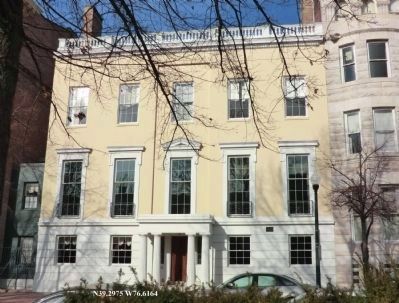
Photographed By Don Morfe, January 5, 2013
3. Mount Vernon Cultural Walk-Contributing to Society Marker
#8 Mount Vernon Place-Plaque by the door-This structure has been recorded by the Historic American Buildings Survey of the United States Department of the Interior for its Archives at the Library of Congress
Credits. This page was last revised on March 22, 2024. It was originally submitted on January 7, 2013, by Don Morfe of Baltimore, Maryland. This page has been viewed 666 times since then and 14 times this year. Photos: 1, 2, 3, 4, 5. submitted on January 7, 2013, by Don Morfe of Baltimore, Maryland. 6. submitted on June 20, 2017, by Allen C. Browne of Silver Spring, Maryland. • Bill Pfingsten was the editor who published this page.
